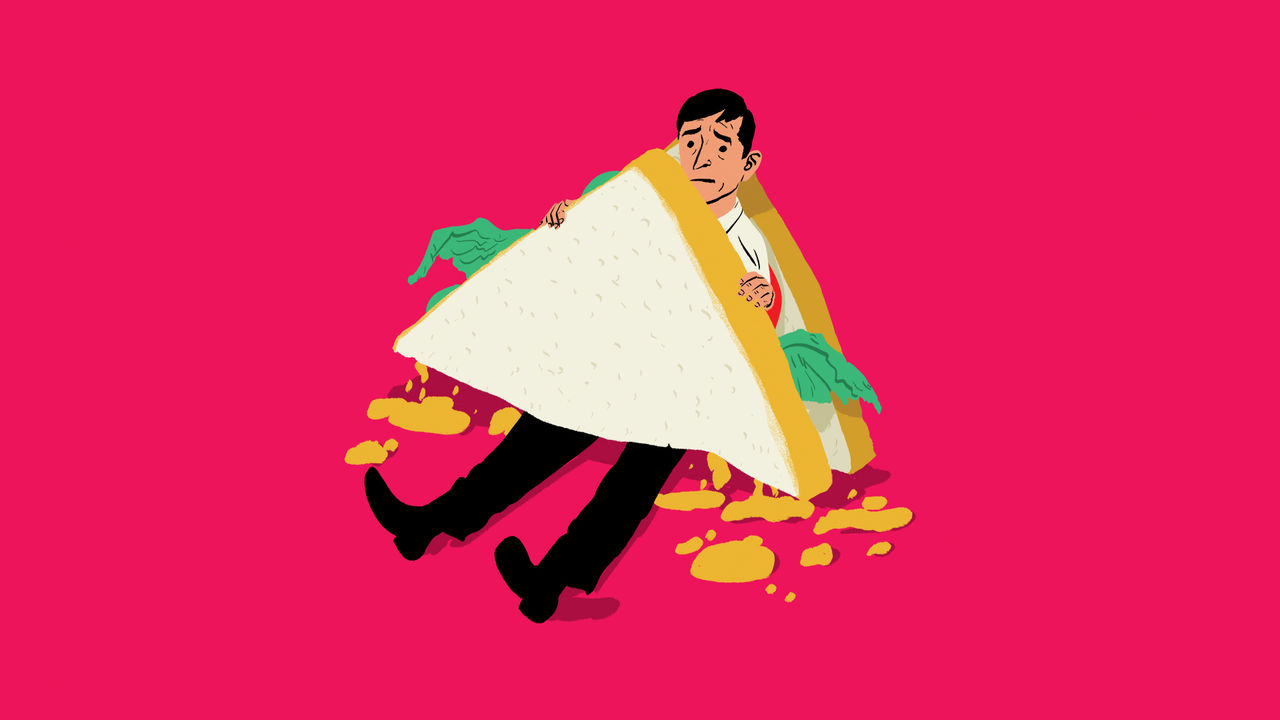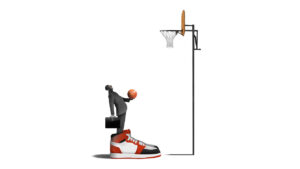
The competition to be the worst two words in the English language is extremely hard-fought. Surprise party. Cruise holiday. Rice pudding. Keen golfer. The list goes on and on. But right up there is “sandwich lunch”. Separately, each of these words contains lots of promise. In combination they spell unmitigated disaster.
Most obviously, they signal that your lunch is ruined. You might have been planning to stroll through a park, eat with a friend or chew your way through some YouTube videos. Now you will be spending your break working, trapped in a meeting room with several of your colleagues. Even more gallingly, your manager has announced that sandwiches will be provided as though you should be vaguely grateful. “It’s more fun because food is being laid on,” doesn’t ring true in prison, and it doesn’t in offices either.
The actual food choices are not yours. Instead they appear to have been made by a six-year-old. The centrepiece is a platter of sandwiches cut into triangles. There are paper plates. You are tempted to look around for party hats and balloons. (You do see a clown, but that’s a column for another week.) The fillings are unidentifiable. One is either cheese or polyurethane. You know that consuming it will not provide clarity.
Not that you actually eat much. The etiquette of the sandwich lunch requires everyone to take less than they want, in order to signal to the wider group that they are team players who know how to share, not gluttons bingeing on free food. People politely wait their turn and then restrict themselves to a few items. Your own paper plate is fairly typical: two triangles of bread, four salt-and-vinegar crisps, a limp salad leaf and one plum tomato. It’s about as appetising as a cup of sand and much less filling.
Once everyone has loaded up from this feast of delights, someone will expansively encourage you to dig in. “Where to start?” you think to yourself gloomily. You pick up the biggest of your four crisps and put it in your mouth just as the boss begins to lay out the agenda for the discussion.
Crisps are never noisier than when eaten at a sandwich lunch. Every bite thunders through the room; eyes flick your way with each crunch and then back to the speaker. You wonder how long it takes for a crisp to dissolve through the action of saliva alone, and conclude it is better to just get the whole thing over with. Cue a desperate staccato burst of chomping. All eyes are now on you. The boss has stopped speaking. One final crunch, and a swallow. The crisp is dead. So are your promotion prospects.
Your colleagues have now absorbed the risk of eating crisps. But danger lurks everywhere. In fact, the whole thing is an extended lesson on the perils of eating and working. Someone attempts to spear a tomato with a plastic fork and it zooms across the table like a precision-guided missile, seeking out the lap of their manager. Someone else takes a bite of a beef sandwich and realises too late that there is no way human incisors are going to be able to tear through it; they end up with a perplexed expression and a carcass hanging out of their mouth. Another colleague has managed to spill unimaginable quantities of egg on the table and uses a napkin to smear it everywhere. Jackson Pollock would have been pleased with the results.
The chair of the meeting appears to be operating on a simple principle: ask for someone’s opinion only if they have just taken a bite of something. There is a pause for rapid chewing and a poorly suppressed belch, before they make a series of surprisingly cogent points that interest people much less than the spinach between their teeth. And so it goes until the group concludes that the very worst thing you can do at a sandwich lunch is lunch on the sandwiches.
From here on in, nothing more will be eaten. The work will take over, conversation will flow and progress will be made. As the discussions continue, the remaining triangles of bread will start to curl and yellow. You and your colleagues will occasionally glance at the full plate of brownies that sits in the middle of the table. They actually look delicious—here, the six-year-old has chosen well. But now that no one else is eating, there is an unspoken agreement that they should be left untouched.
When the meeting wraps up, someone will take them to the staff kitchen, where the real beneficiaries of the sandwich lunch will tuck in. And you will head outside, so that you can finally get some food. ■
To stay on top of the biggest stories in business and technology, sign up to the Bottom Line, our weekly subscriber-only newsletter.
















